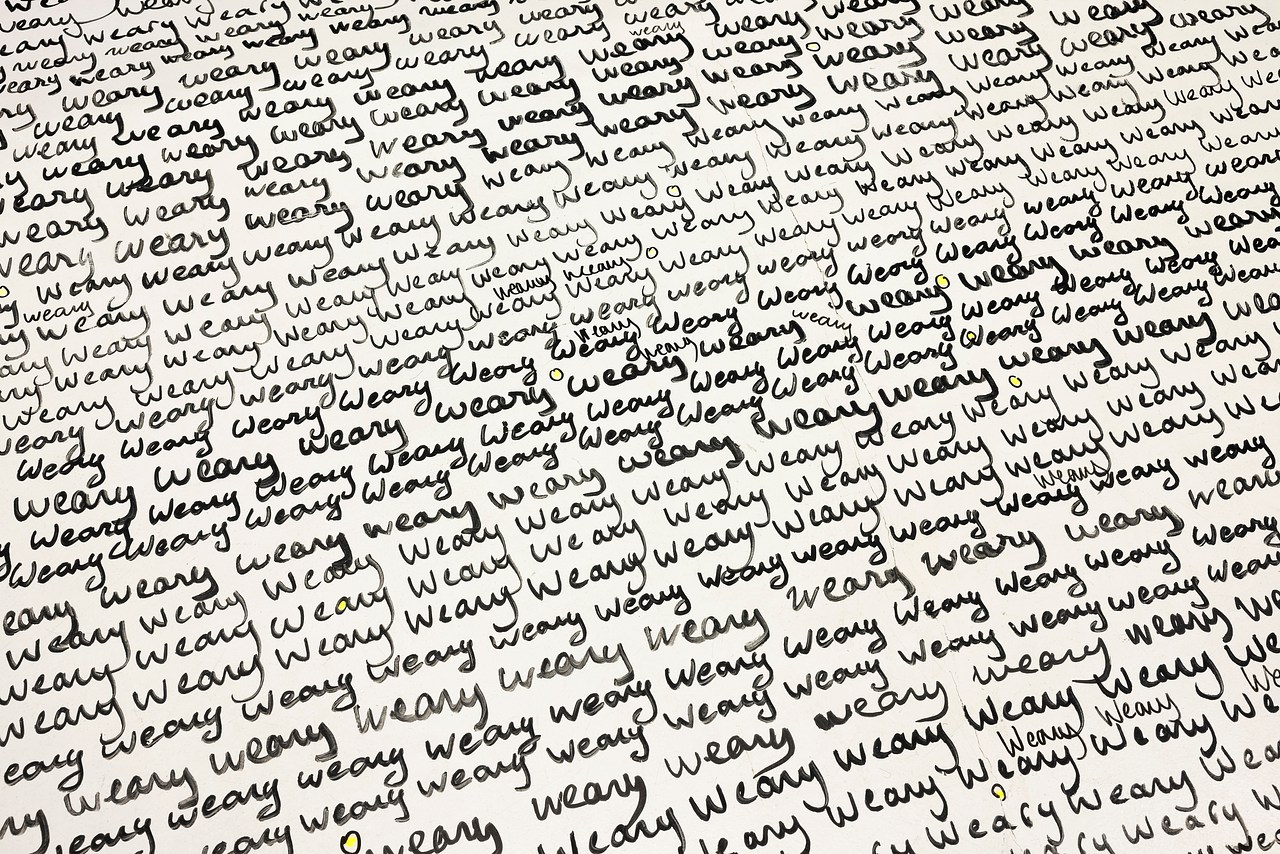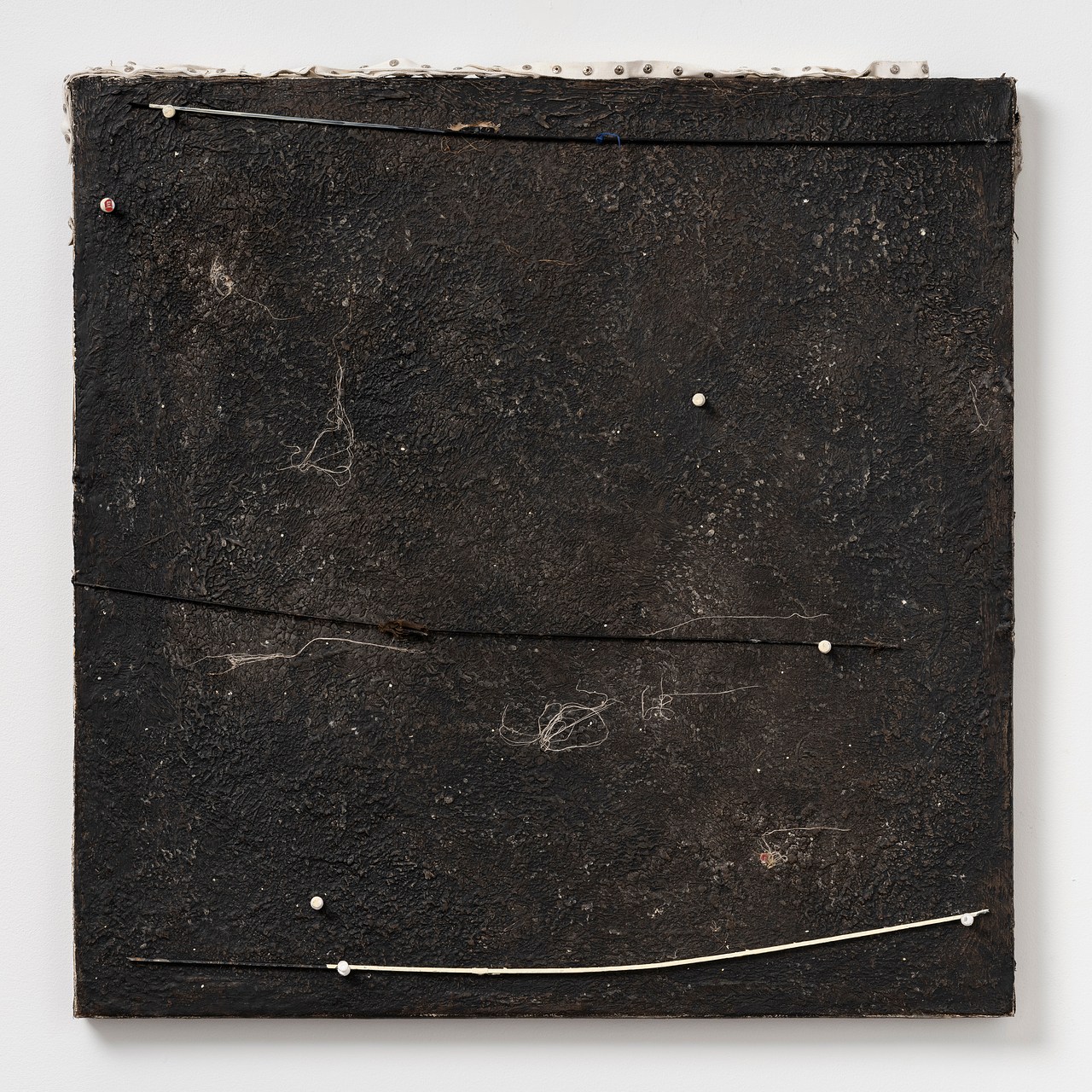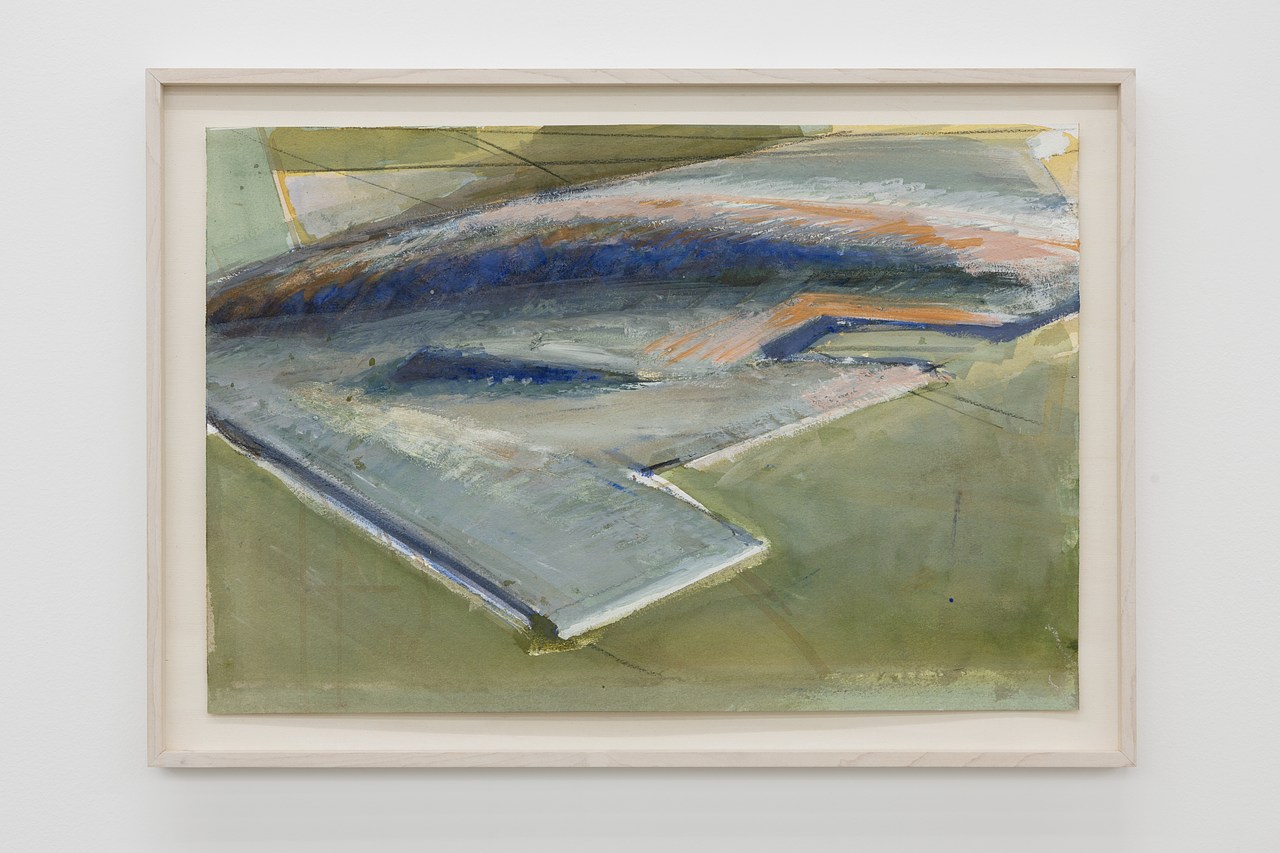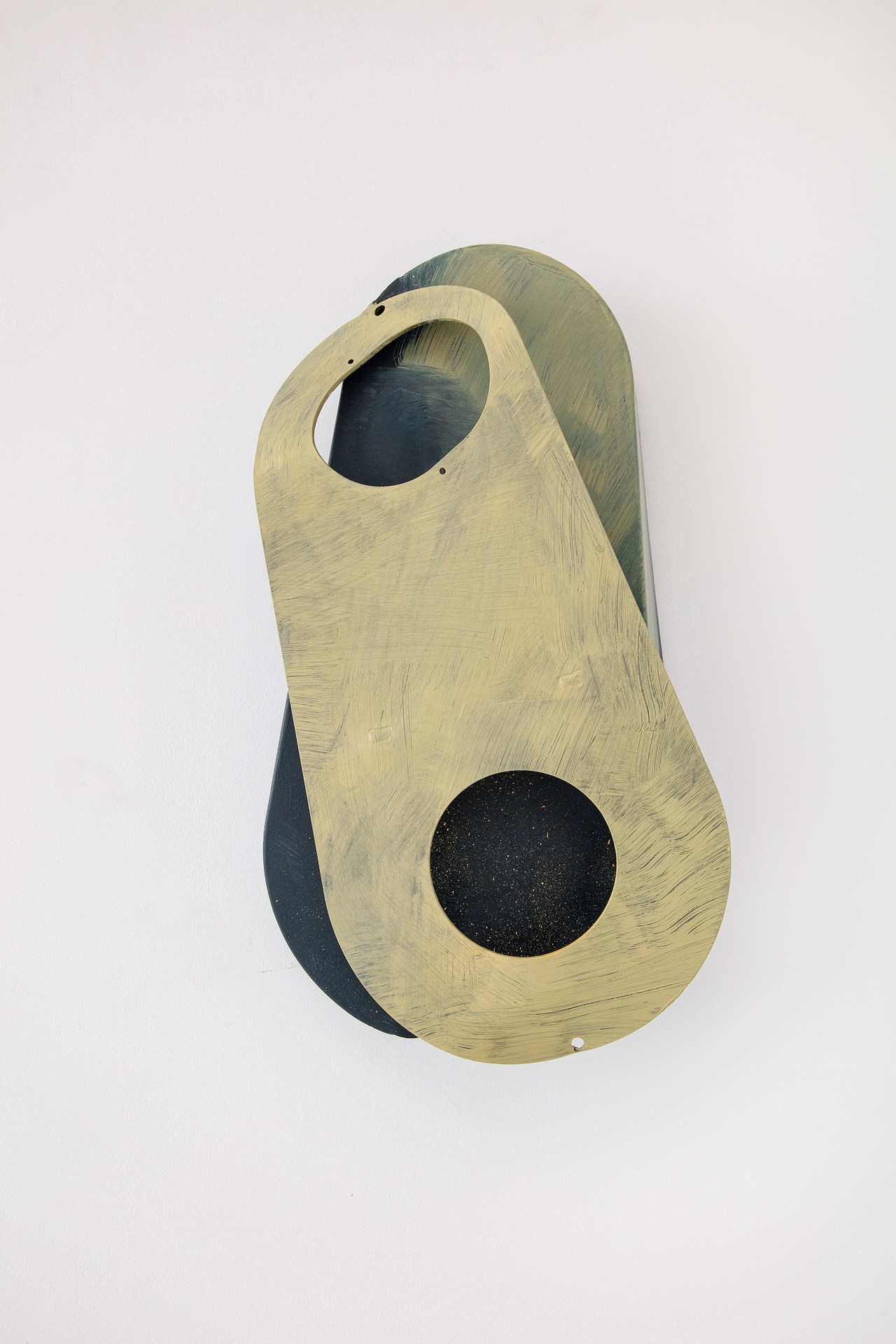“Understudies,” a survey of work by Zambian-born, Johannesburg-based artist Nolan Oswald Dennis at the Zeitz Museum of Contemporary Art Africa, opens with an overture—or so I thought. I entered through a reading room containing an imposing vertical steel structure, a wall drawing rendered in graphite, and the artist’s studio notes: research drawings that would become their new body of work. The room was an example of what Dennis described in the exhibition text as “quietly sharing secret strategies of liberation through convoluted and non-linear forms.”
I later found out that this room was actually the end of the exhibition: I had seen the show in reverse. This false beginning nevertheless set the tone for me and felt fitting for an exhibition set on challenging and reimagining knowledge and structures that feel fixed, whether astronomy, land sovereignty, geological formations, or cartographic systems.
Dennis relinquishes some authorship (read: power) in the making of some works in “Understudies,” calling on museum workers at the Zeitz MOCAA to cocreate. The work Xenolith (Letsema), 2024, a large column made from lines of packed soil, is installed alongside the exposed hundred-year-old columns of the grain silo where the museum is built. Letsema, a Setswana word, speaks to the practice of voluntarily working together—a communal act typically applied to farming but extended to ways of organizing that took root during liberation struggles in Southern African countries. This collaborative work considers what images can emerge when labor is done collectively, and becomes a way to disorganize space and time—space, by reimagining the very structure of the museum, and time: the time of labor, and of geological deep time.
View of Nolan Oswald Dennis’s 2024 exhibition “Understudies” at Zeitz MOCAA, Cape Town.
Space, time, and the mystifying yet ordinary ways they interact are recurring themes for Dennis, whose concurrent show, “overturns,” is on view at the Swiss Institute in New York through April. The most affecting work in “Understudies” is titled Superposition, 2024, after a principle of quantum mechanics: It describes how a physical system can be in more than one state at the same time. This immersive sonic room-size installation, boasting an infrasonic sound system consisting of a sub-bass speaker, LED unit, and sensors, is a techno-poetic reflection on our relationship to land, deep time, and planetary interconnection. The work uses acoustic compositions of seismic data documenting the earth’s vibrations collected by the Wits School of Geosciences in Johannesburg during the 2020 COVID lockdown. These sounds capture data about volcanoes, bombs, and earthquakes, but are played at frequencies beyond the threshold perceptible by the human ear. Superposition explores how we might learn to listen to the earth, attuning ourselves to the vibrations that pass through it; it also points to the limits of what we can know and perceive, and to the limits of data’s authority.
View of Nolan Oswald Dennis’s 2024 exhibition “Understudies” at Zeitz MOCAA, Cape Town.
Indeed, the show often speaks corporeally as much as it does cognitively. Throughout the show, Fred Moten and Wu Tsang’s concept of gravitational feel rang loud in my mind. I kept thinking—nay, sensing—a kind of gravitational pull toward space and time, my body feeling its own mass, aware of its weight and the weight of time. Though maps, machines, data, and drawings fill the museum, they are arranged in installations that choreograph bodies. For instance, Izintaba (Hottentots-Holland), 2024, is a 12-minute immersive film featuring digital simulations of mountains, hills, and other elevations. Viewing the film, one is enveloped by it; the rocks seem to float toward you.











